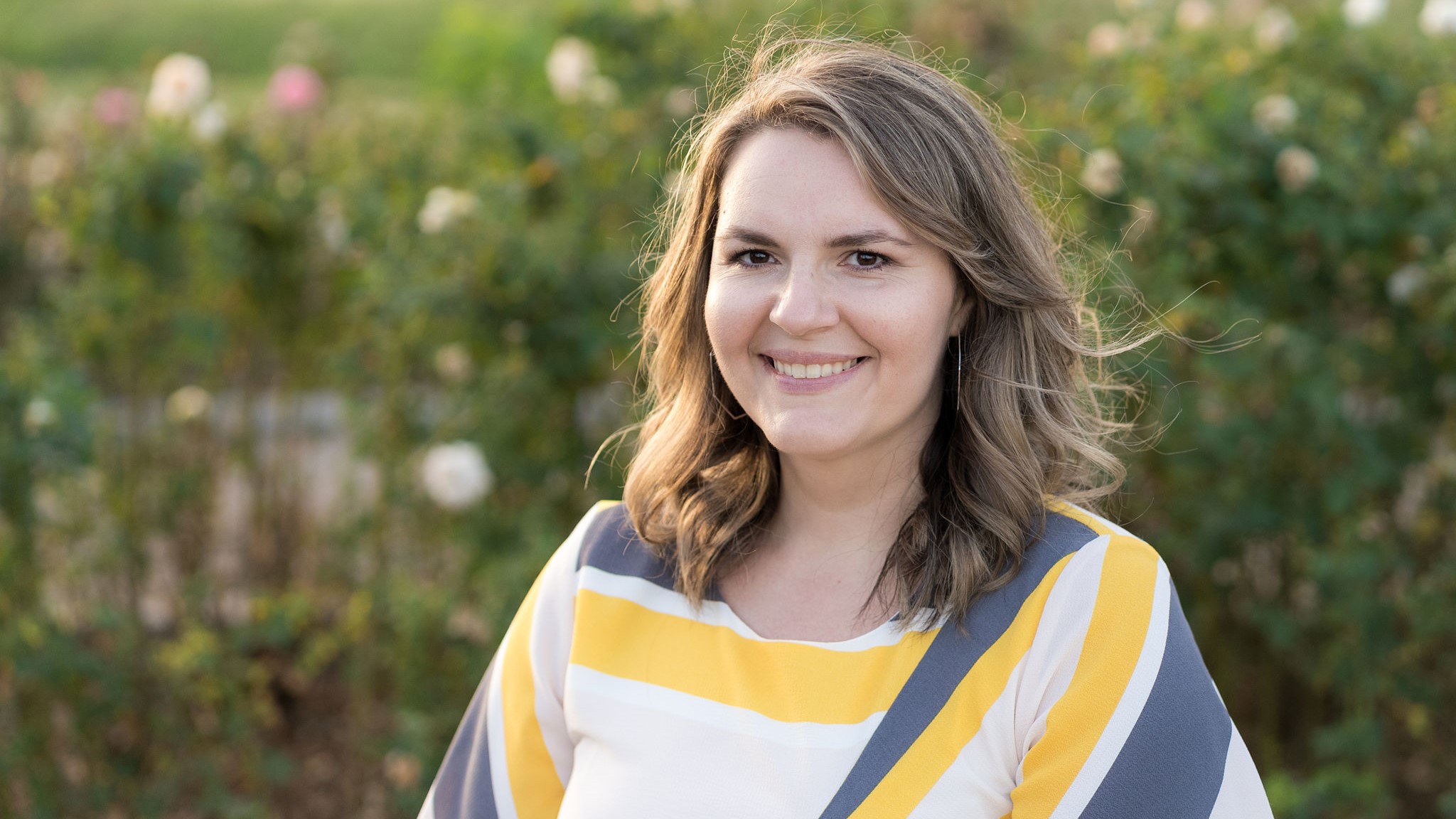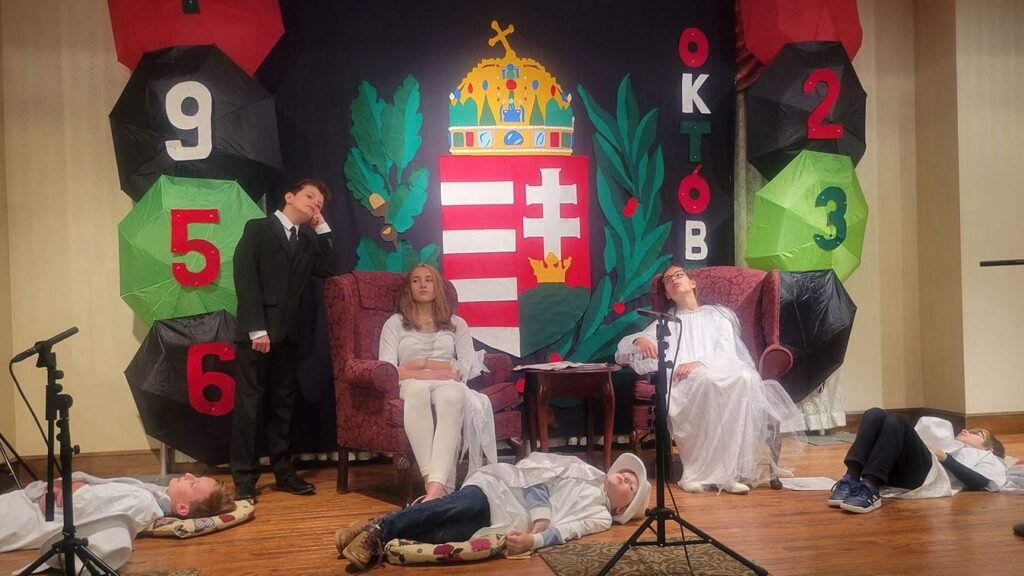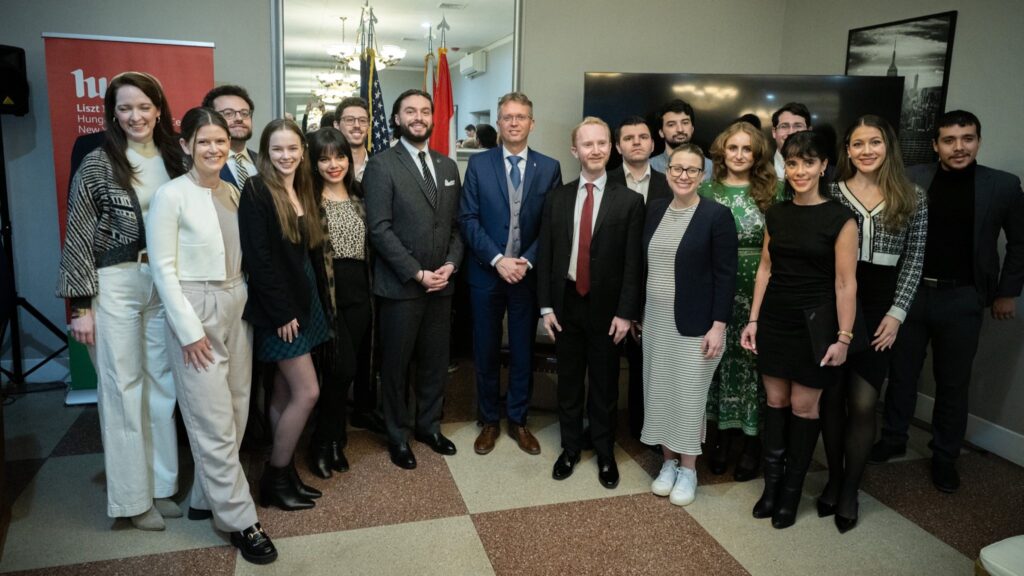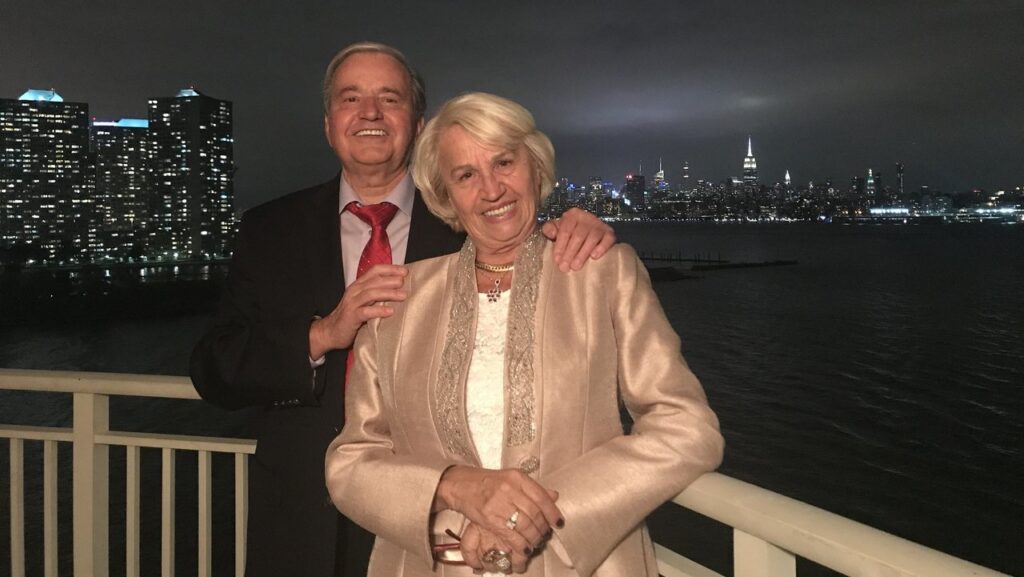Réka Vicsacsán (neé Nagy), born in Kolozsvár (Cluj, Transylvania, Romania), always wanted to be a teacher, following the example of her grandparents. She met her Hungarian American husband at a wedding in Transylvania, and after several trips and a longer ‘trial period’, she moved with him to Arizona in 2014. Since then, she has become a mother of two, an instructor at Grand Canyon University, and an active member of the local Hungarian community. In 2016, after a serious conflict creating a lasting divide within the local Hungarian American community, she founded the Napocska Hungarian School and later the Hungarian Cultural Association of Phoenix.
***
Why did you become a teacher?
I have always wanted to be a teacher, probably influenced by the fact that my paternal grandparents were teachers. I didn’t know them personally, but the stories I heard about them convinced me of what a great profession teaching is. I have always loved being around children. The other reason is that I had teachers who made me love not only learning, but also teaching. At first I wanted to be an elementary school teacher, but after realizing how much energy it takes and how difficult it is to make ends meet as a school teacher, I focused on finding a subject that I liked enough to want to teach at higher levels of education. Around grade 7, literature seemed to be my choice, but in grade 12 I became very fond of philosophy, too. Ultimately, I came to the conclusion that I will apply for both. Since my parents were worried about what I’d do for a living, I took Finnish alongside Hungarian, and Communication alongside Philosophy. By that time, I was already very good at English, had a German language exam and was doing quite well in French, so I wanted to choose a more unique language that would give me a better chance on the job market. I had also heard that Finnish would be ‘easy’ to learn as a language related to Hungarian. This was obviously not the case, and over time I realized that it wasn’t the best choice either, because Finnish turned out to be ‘too’ unique. As for communication, I didn’t know much about it when I applied, but it seemed to be a marketable skill, and it was indeed; later I could even build up my teaching career on those foundations. When I got accepted for both majors, I decided to try them both, and then after the first year I would decide which one to pursue further (first).
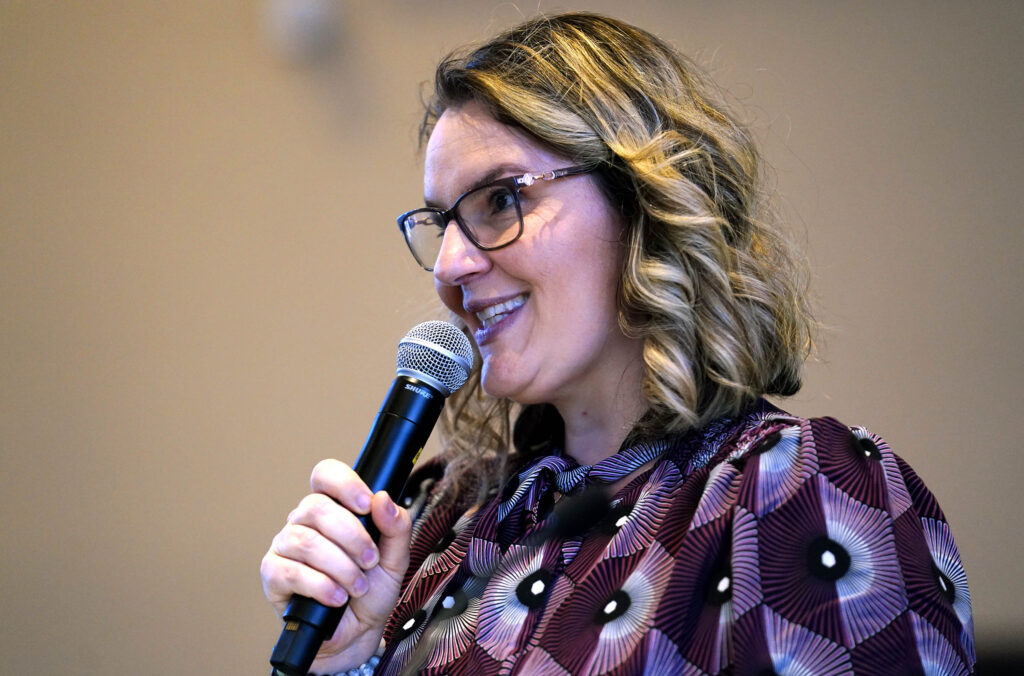
How did you know so many languages, in addition to Hungarian and Romanian?
The first six years I attended the Iris school district in Kolozsvár, where my grandfather used to be the principal. During his time there, the school was mostly Hungarian. Over the years the number of Romanian-speaking children grew so much that the Hungarians were gradually and completely squeezed out. When I was in grade 5, our parents fought for another year to keep at least one Hungarian study group—even talking to representatives of the Hungarian Democratic Alliance of Romania (RMDSZ), giving interviews to newspapers and TV stations, pleading to authorities to prevent the discontinuation of Hungarian education in that school. When the number of Hungarian students finally dropped below ten, Hungarian education was discontinued and I was transferred to the István Báthory High School. Previously I studied French, but in my new school I was taught English as my first foreign language and German as my second. This is how I knew these three languages. Moreover, I even learned some Spanish from the South American soap operas I saw on TV, which were not dubbed in Romania.
What did you decide after your first year at university?
It turned out that we were the last four-year cohort, after which the three-year Bologna system was to be introduced in ascending order, and the future of some courses became uncertain, so I decided to continue both majors simultaneously. It was a tough four years; I’m not sure I’d do it again. Afterwards, at my professor’s suggestion, I started a Master’s degree, later a PhD, the last two years of which I spent—still as a student at the Babes-Bolyai University of Kolozsvár—in Budapest on an EU grant, taking regular trips home to Kolozsvár to teach. My subject was visual communication—with a focus on rhetoric and argumentation—in advertising, so I combined the two disciplines of Communication and Philosophy.
How and why did you come to America?
In the summer of 2012 I attended a wedding of my former colleagues in Transylvania, where my now husband came representing his Hungarian American family. He stayed in Budapest for about another week after the wedding and we ended up meeting each day. Upon his return to America, we spoke on a daily basis. I visited him during the winter break, he visited me during the summer vacation, until I defended my doctorate in October 2013. A few days later I came to America with a six-month tourist visa to decide whether I could live here as he was not planning to move back home. He was 11 years old when his family left Romania for the U.S., he grew up here, and by the time we met, he had already had a stable job and an established career in engineering which he didn’t want to give up.
I have been to America a couple of times before on a summer student internship program on the East Coast, which I always perceived as a great adventure, but I never desired to live here permanently. When we decided to spend a longer period of time together in Phoenix, Arizona, we wanted to assess how well our relationship was working and whether I could get used to the environment and continue my career here. I was brave and in love enough to make the decision to stay, even though I had some fears and concerns. It’s not easy to move overseas and leave everything behind: your family, friends and career. I had to start from scratch hoping that our relationship would work in the long term and I would find my place here. In April 2014 I decided to take a leap of faith, and said yes to him.
How did you build your teaching career in America?
At first I worked for a company for a few months to gain work experience. In the meantime, I looked for opportunities in academia and applied for teaching jobs. Within five months, I was hired by Grand Canyon University, a private Christian university, where I’ve been working ever since. At first, I was an adjunct (part-time faculty member). After about a year, a full-time position opened up, which I applied for at my husband’s suggestion and won the position. I teach introductory courses in communication for groups of 100–200 students and some higher level courses for smaller groups of students with majors in communication—topics that I studied in my doctoral program. The subjects or the language were not challenging, but the time was: my first daughter was born in the spring of 2017. When I was hired, I asked my parents to come to Arizona and help me with watching her. They arrived in January 2018, and took care of her while I figured out how to juggle all my responsibilities. I was also volunteering in the local Hungarian community with great enthusiasm by then. Our second daughter was born in 2022.
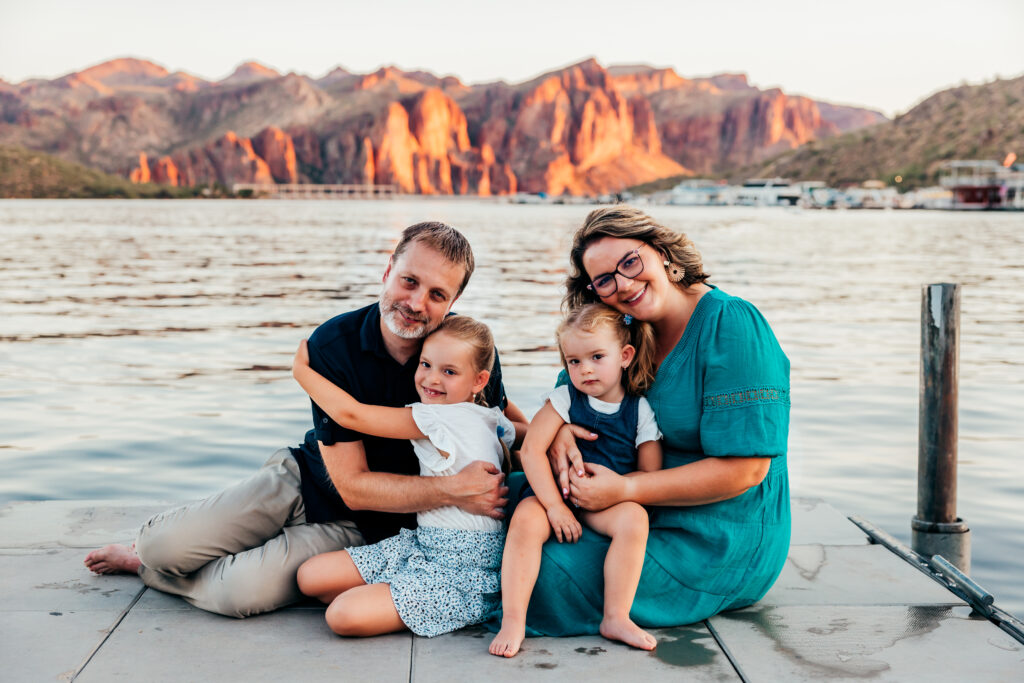
Why did you start the Napocska Hungarian School?
As soon as I arrived in Phoenix in 2013, I was immediately drawn into the local Hungarian community of a few hundred people, with an active core of about 100, which included my husband’s very active family. For many years, his stepfather was the chief elder of the local Hungarian Reformed church, supporting it with the family in all aspects. Knowing that I had a Hungarian language degree and teaching experience, they asked me to get involved in the local Hungarian weekend school, so I took over one of the groups. There was also a Hungarian dance group, which I also participated in and took part in all the Hungarian programs, reciting, singing or playing guitar.
However, in 2016, a very ugly conflict broke out between the reverend, his wife, and the dance group. The Hungarian community completely fell apart and this division unfortunately continues to this day. My friend Emese András and I wanted to continue having Hungarian cultural programs and reaching a different kind of audience too. Many parents had pulled their children out of the Hungarian school and the community in general as well because of this conflict. Some of them asked me to start teaching their children at home. We first gathered in an apartment in August 2016 with about eight children of very mixed ages, from three-year-olds to 11–12-year-olds. Soon the number doubled, so we had to rent a proper venue, and then a Hungarian mother who opened a local kindergarten offered us the use of their building, so since then we’ve been operating there every other weekend as the Napocska Hungarian School. Currently we have a group with four babies and toddlers, led by Sarolta Gulyás; a kindergarten-school age group (from 3–4 up to 9–10 years old) taught by me, and a teen group (for those above 10 years of age) led by Emese. They are all second-generation children who were born here, and have very mixed language skills. Many have graduated from the initial group.
Do you also accept children who speak little or no Hungarian?
We can’t afford to turn them away because overall we are very few, we can’t even create groups that are age specific. It’s not our primary goal to make the children fluent in Hungarian, it would actually be impossible in those two-hour classes twice a month. The school can only add to the work that parents do at home. Of course, it’s more difficult for those in mixed-language marriages, but nowadays there are plenty of strategies widely offered by linguists as a solution to help these parents too, if they truly desire to help their children. Our primary goal is to teach them about the culture from which their parents come from. If, in addition, we can achieve that they speak Hungarian with their grandparents and cousins, that’s great. I recommend everyone to take their children to a Hungarian-language environment every summer and to talk as much as possible with Hungarian family members.
At school, I initially was the only teacher, and incorporated differentiated instruction to the different age groups and language skills. Later I was helped by a Hungarian girl who worked here as an au pair. Then Emese joined as a teacher and I also made attempts to involve some of the parents. This activity can and should only be done through voluntary community work. It’s very important that parents see how much work it requires, otherwise they won’t appreciate others’ efforts. That’s why I ask the members of the community to volunteer whenever they can. When they only come as guests, they don’t realize how much time and effort is put into organizing something; they see the end result, but don’t see the before and after, for example how my husband spends hours loading and unloading items from the car, and how I spend days with reorganizing everything on the shelves in our garage.
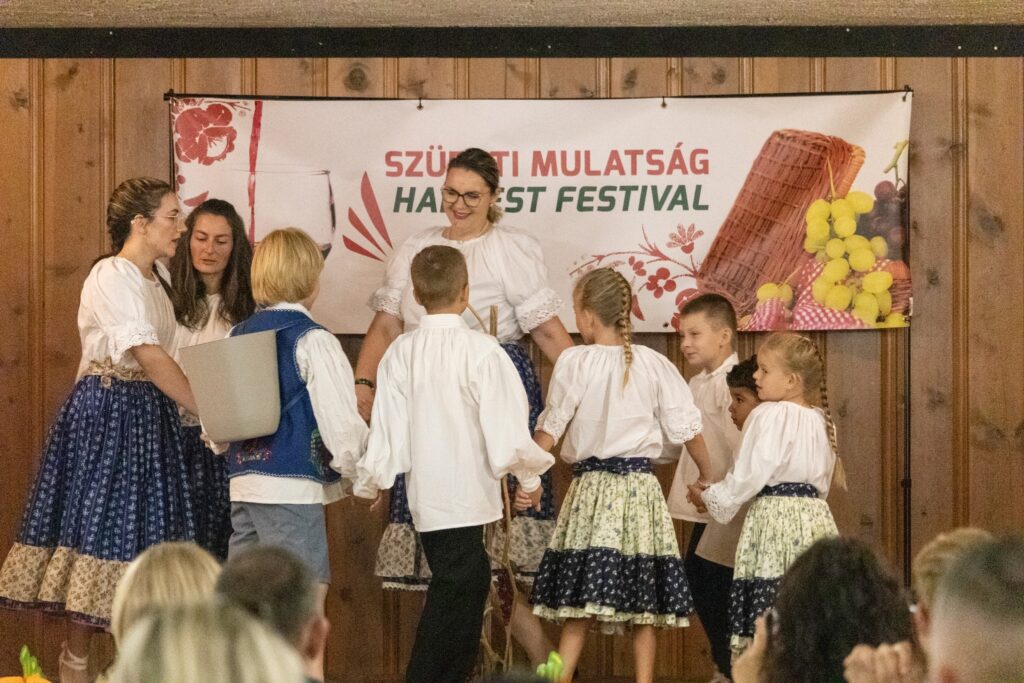
You are not referring only to school activities, right?
Yes, that’s right. As the need arose to organize not only school activities, but also various cultural events, Emese and I founded the Hungarian Cultural Association of Phoenix, where she initially took on the role of vice-president. We organize events such as a harvest ball and a Hungarian festival—the largest Hungarian event in Arizona by now—, literary nights, theater performances, and language classes for adults. Over time, others joined our leadership, such as Edit Vasadi, who helped us for a number of years, but they later moved to Canada. We now have three other board members chosen from among our volunteers: Réka Fromm, Szilvia Jeremiás and Krisztina Valler. Emese is now working only as the school’s assistant principal and, of course, she is volunteering at every event. She hasn’t completely left the association, but every now and then a change is necessary to bring new perspectives and ideas, as well as not to experience burnout. Of course, we always have an additional 10–15 volunteers supporting us. Since I’m the face of the organization, many people identify me with it, which is something I’d very much like to avoid, because it’s far from being a one-man show. Without the board and volunteers, I couldn’t do this work. Neither without my family’s help and support.
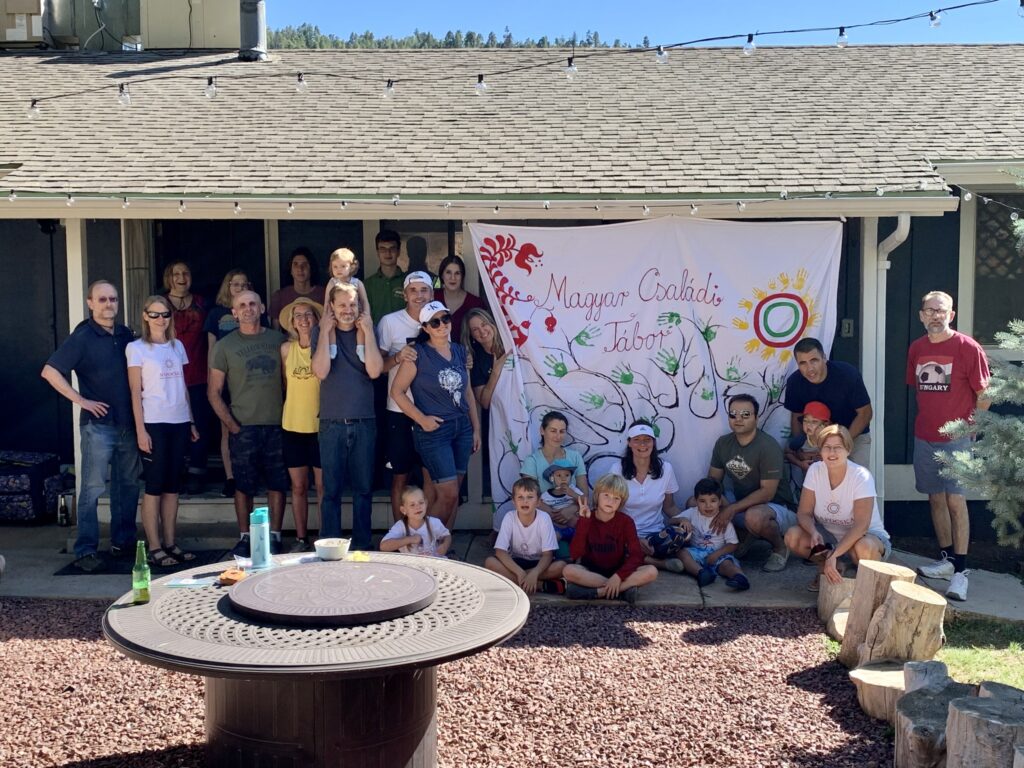
Tell us a little more about your programs.
In October 2017 we organized our first Harvest Ball and in 2019 our first Christmas Market. We prepare the children for these occasions through providing some background knowledge. We educate the audience as well: tell them who St. Nicholas was, why Santa Claus doesn’t come to our houses at Christmas, etc. At the end, we have a short celebration during which we give out our Community Award. A volunteer is awarded each year—that’s how we recognize them, so that they can feel what we often tell them: how much we appreciate their voluntary work in the community. A few years ago we also started a scholarship fund to support local young people of Hungarian origin who are going to university. We added volunteering as a criterion for application in the hopes to involve the youth.
You mentioned that your festival became Arizona’s largest Hungarian event…
Yes, it has become one of the largest events since 2019. We organize it every March. I can’t give you exact numbers we have since we don’t charge admission fees for these large events—except for the Harvest Ball dinner—, because we think these events should be accessible to everyone—a festival is about showcasing the culture one is so proud of to a wide audience—, and we wouldn’t even be able to cover the costs in this manner. There were around 100 attendees in the first year, and about 800 this year, if not more.
We try to invite a variety of performers to the festival, because it’s important for us to showcase more facets of our culture. We usually start with our Hungarian school’s children, followed by a folk segment. We often invite folk dancers or folk bands, who—very importantly—bring authentic Hungarian music. Afterwards, we try to present contemporary Hungarian music; here too, it’s very important to invite performers that are well-prepared and of high standard. Finally, for the second time this year, we had a local band perform whose singer-songwriter was captivated by Eastern European folk culture and incorporated it into his musical world. With the fusion of the music of these cultures we want to show how Hungarian culture influences the culture of other nations. We also set up a tent next to the main stage, where Szilvia Barta is responsible for traditional handcrafts and demonstrations for children, but adults are also very interested. We have some modern games for kids as well. And of course there are several local, Hungarian vendors.
What about national holidays and other school events?
As the festival is very close to 15 March, we integrate the commemoration into the festival’s program. We commemorate 1956 in the school, as we usually do on 20 August, too. It doesn’t make sense to have a big event and rent a venue in August, because many members of the local Hungarian community are still on vacation. It’s important to make the right decision and pick the events we rent a venue for since we favor quality over quantity, and that costs a lot of money, which we partly cover from grants and sponsors to make them accessible to many.
In addition, we also organize the carnival, Easter celebrations, and family camps at the school. We spend a whole weekend together with about 20–30 people, this year for the fourth time. Like all other events, this is also a community get-together. Besides the camp, I’d like to mention another program targeting the youth since this is one that I’m extremely proud of. We were the second school in the U.S. who achieved to become an ECL Language center. Mónika Veres, who was living in New Mexico at the time, helped us out with preparing our first generations of high schoolers through online classes for this exam. We achieved all of this during the Covid pandemic; we had three teachers qualify to administer these exams. During the Covid pandemic, we moved to an online format very quickly and were adamant about continuing our activities. We even came up with new events or modified existing ones: we started offering language classes for adults, which are still very popular. I think it’s very important to assess the needs of the audience. As a communication scholar, having a solid background and skills in organizational management help me advise the team and decide what programs are worthwhile or not worth continuing. That’s why I don’t think that organizing events with the same theme or same strategies is going to work in the long run…
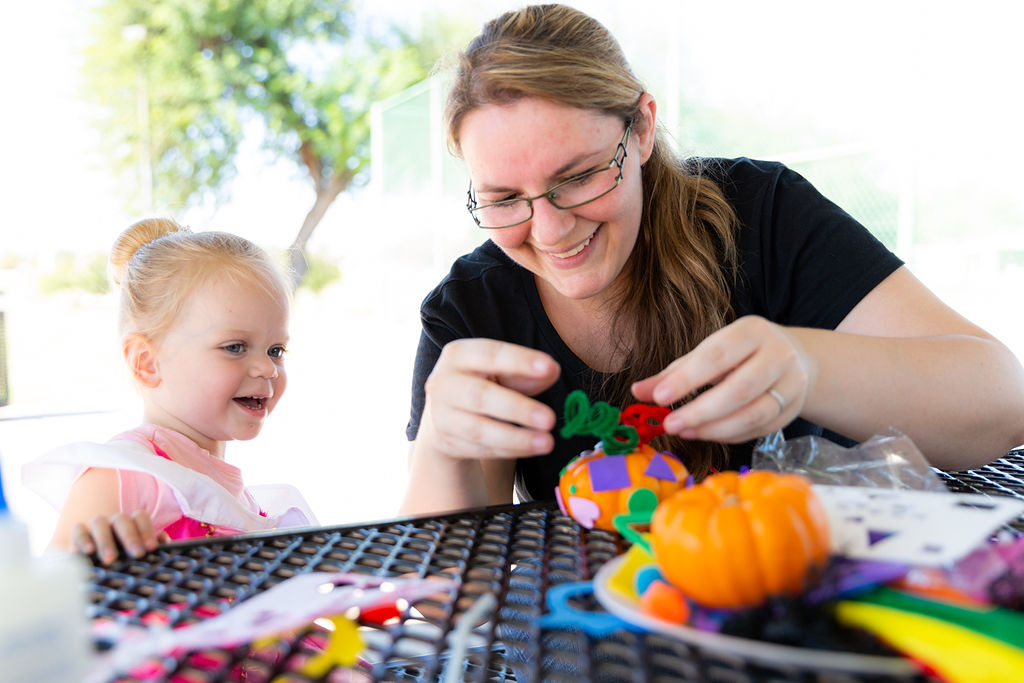
What do you mean?
Since the division of the formerly unified local Hungarian community in 2016, both successor groups have been organizing their own events simultaneously, including maintaining two Reformed churches, with a lower number of permanent members each. In addition, there is a Social Club organizing parties. There were attempts for collaboration between us and one of the churches, we attended meetings, dinners, and Christmas gatherings, but we cannot say that they worked out very smoothly. Everyone insists on their agenda for different reasons, which isn’t necessarily the good direction in such a small community. Unfortunately, there is currently no meaningful communication between the various local Hungarian organizations. Ours was the fourth harvest ball within two months…
Have you experienced any trend of improvement since 2016?
Unfortunately, not. Maybe, if there will be changes in the leadership of these organizations… The conflict has caused very deep wounds for many, and it has also brought to the surface differences that we cannot bridge at the moment. We think very differently about a number of fundamental issues such as morals or ethical behavior, as well as event coordination, like suitability of event venues and the acceptable level of costs; we cannot agree on what should or should not be organized, what we should or should not stand for…
We started our own organization with the idea of doing something different from what we had seen before in the community, because we felt there was a need for change. Since I’m here and before 2017 there were parties organized by the Social Club and certain cultural events organized within the local Hungarian Reformed Church, often with a religious theme. As a result, there was a large audience for whom there was simply no Hungarian program or performers of their taste or interest. We try to take a different approach as to what and where to organize. As mentioned, we put a lot of emphasis on quality, on education, and on timeliness. It’s also very important for us to showcase authentic Hungarian culture, while opening up to others who don’t necessarily speak Hungarian, but are interested in our culture. We aim to organize educational programs, and we are very careful that these don’t have a religious or political orientation—we believe that we should focus only on culture and on educating others about our cultural traditions.
How do you see the future of the wider local Hungarian community?
In some of the other local organizations, there are mainly older generations. If they don’t take initiatives to involve the younger generation, they will perish sooner or later. There have been a few initiatives on our part to collaborate with at least one of these groups, but I wouldn’t say that this has been an overwhelming success so far. Conflicts aside, cooperation is also difficult at the moment because each organization has a very different target audience. Those who attend our programs typically don’t attend the others’ initiatives, and vice versa. So I don’t think we are drawing audiences from each other. Of course, in the case of the Hungarian Festival or Christmas Market, there may be some overlap, but in general our programs are different from what the other organizations offer, and that determines who will visit them.
We’ve been approached much more often by local American organizations to present Hungarian culture to various schools or other groups as part of a larger, multicultural performance. These collaborations have been so invigorating for our whole team that we’ve come to the conclusion that this could be the path for us. This was one of our missions in the first place: to open up to others. As a teacher of intercultural communication, I see how many conflicts can arise from cultural differences and communication habits—i.e. from not knowing enough about each other’s cultures. But if we open up to others and teach them about our own culture, it might be easier for others to accept us as Hungarian schoolmates, colleagues, spouses and vice versa: it will be easier for us to accept them and thus make intercultural connections less subject to conflicts. But all this would be true, of course, for relations within the Hungarian community as well.
Read more Diaspora interviews:

